Shin
The shin is the longest and thickest bone in the leg, between the feet and the knees. Anatomically called the tibia, it is the second largest weight-bearing bone in the body, only behind the femur. As shown in the image, bones are surrounded by a fibrous and innervated structure called periosteum, which protects and nourishes the bone and can be a point of attachment for the muscles.
Many muscles, responsible for the movements of the feet, fingers, and ankles, form this region of the shin. One of the main ones is the tibialis posterior, which helps support the medial longitudinal arch, which distributes load and cushions the body weight. Another important muscle is the sural triceps (on the calf), formed by the union of the gastrocnemius and soleus muscles, associated with posture and locomotion.
CAUSES
Alignment and Shin Pain
A person’s natural alignment and type of footstep are essential to cushion the body’s weight and impact all activities. The footstep can be neutral, pronated, or supinated.
The movement of the pronated footstep happens inwards and the supinated outwards, as shown in the image above. Therefore, the neutral is ideal and represents a footstep without substantial movements both inwards and outwards. It means the system works with the right amount of pronation and supination.
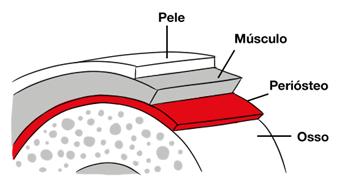
When the person does not have a good alignment, the load on top of the body becomes more significant, making them more likely to develop some pain in the shin. Problems in this area are mainly related to excessively pronated walking.
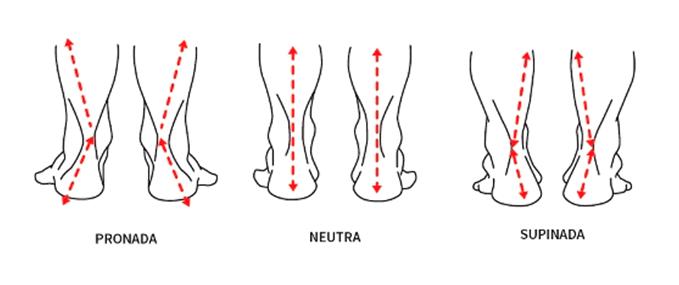
Arch height and shin pain
The foot has an elevation on the inside, called the plantar arch, one of those responsible for load distribution and impact cushioning of the body, supported mainly by the posterior tibial muscle. However, this arch can have some anatomical variations, which can cause pain in the shin, called “flat foot” and “cavus foot”.
Flat feet (flat feet) are usually related to excessive pronation during running or walking, where the medial longitudinal arch collapses, which places more stress on the foot and can affect the shin. This happens because, when running, the posterior tibial muscle exerts more force to support the arch of the foot and, as a consequence, it can cause inflammation of the periosteum of the tibia (shin splints) since the structures in the region (both bones and muscles) are overloaded. In more severe cases, there may be insufficiency of the posterior tibial tendon.
Pes cavus have higher arches and are related to the supination of the foot. In this case, as in the previous one, those who practice impact sports, such as running, are also more affected.
Overload and shin pain
Most of the time, shin pain happens due to physical wear and tear in activities and exercises. As mentioned before, the primary “victims” of this pain are people who run a lot and end up overloading the region by not taking some precautions and committing the carelessness below:
– Increasing the distance and intensity of the race without having the proper preparation;
– Modifying the surface where you perform the long-term activity (running on rigid surfaces, such as concrete, can cause more pain, for example);
– Performing repetitive training;
– Wearing inadequate footwear.
SIGNS AND SYMPTOMS
Shin pains are felt in the front of the leg, in the tibia itself, and can happen during rest and exercises, but the highest intensity is at the beginning and end of training. According to the study “Medial tibial stress syndrome: conservative treatment options”, shin pain is linked to running and sports practices with repetitive trauma.
Most of the time, pain in this region can mean shin splints. Still, they can also be related to misalignments, types of feet, limb inequality, weakness of the tibial muscle, and, when not diagnosed and treated soon, even stress fractures.
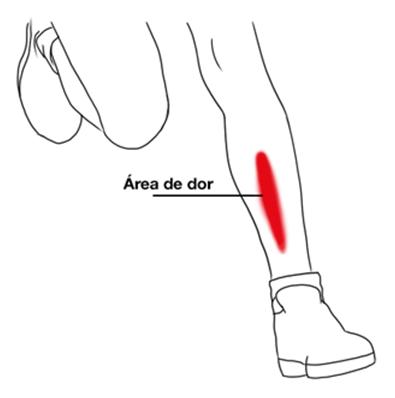
Cases of shin splints are also known as tibial periostitis and/or Medial Tibial Stress Syndrome, a pathology defined as an injury due to excessive leg load. This inflammation directly affects the tibial periosteum (a membrane that surrounds the bone), appearing when the structures around the tibia do not support the burden imposed by the body.
Suppose the person does not have a good alignment, he will have a higher load to bear, and thus he will be more likely to develop some pain in the shin bone. Shin splints are also the leading cause of stress fractures. It is rare but happens in most chronic cases without adequate treatment.
Another condition can be confused with shin splints, but they are very different, including the care to treat them: pain in the anterior tibial muscle. It is essential to know that while shin splints (Medial Tibial Stress Syndrome) cause pain in the tibia, where you can feel the bone, the anterior tibialis muscle is on the outside of the shin. Pain in this second region is much rarer and occurs due to an immediate problem in this muscle. In contrast, the main problem in shin splints is the bone’s reaction to overload, which happens for several reasons, as already mentioned.
PREVENTION AND TREATMENT
Shin pain usually affects people who practice physical activity, so the first thing to do when you feel this pain is to rest and reduce your exercise load. For those who do not want to stay still, a good tip is to change the type of activity for one with less impact, such as swimming, instead of running. When returning to activities, care is needed when choosing the terrain where to walk and run, balance the intensity, seek expert guidance, and, if possible, correct changes.
In addition, it is vital to see a specialized doctor, especially if the pain is severe enough to make it challenging to get up and walk, in addition to other symptoms. A physiotherapist can also help by advising on treatment. Some attitudes can be done at home and help to improve shin splints, such as:
– Make ice packs;
– Stretching and strengthening muscles;
– Wear suitable footwear. Worn-out shoes can be the initial cause of shin splints.
FEET WITHOUT PAIN® CUSTOM INSOLES AND SHOES FOR SHIN PAIN
Feet Without Pain custom-made insoles relieve shin splints and prevent new problems, as they are tailored to improve impact cushioning for people, whether they are runners or not. Insoles also help a lot in biomechanical alterations, as they support the medial longitudinal arch and correct the step.
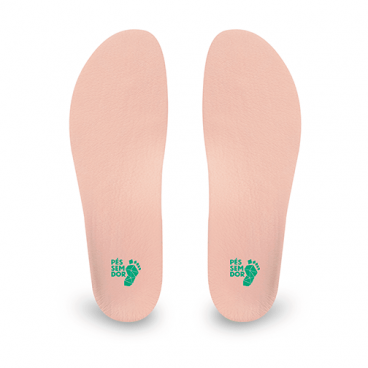
Custom-made shoes are produced for each person’s feet. As a result, they offer absolute comfort and the perfect match between the insole and footwear, providing good stability and impact absorption.
The custom insoles and shoes are made with 3D technology and millimetric digital precision after a free foot, ankle, and knee evaluation with our specialists at one of our branch offices. Check some of their benefits for your feet below:
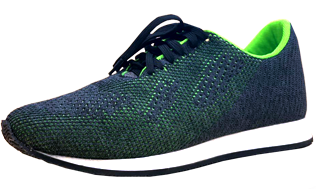
Unisex Sneakers Feet Without Pain | You can choose from over 20 men’s and women’s shoe models.
- Elimination or reduction of pain;
- Injury prevention;
- Increased comfort;
- Perfect fit;
- Standing longer without pain or discomfort;
- Prevention of pathologies progression;
- Improved impact absorption;
- Improved sports performance.
FREQUENTLY ASKED QUESTIONS (FAQs)

How to purchase your custom shoe or insole?
It’s fast and easy! Schedule a free evaluation of your feet with our specialists to buy your custom-made shoe.
Call, send a message to WhatsApp at 4003-8883, or visit: www.pessemdor.com.br/agendamento.
How does the evaluation work?
Upon arriving at a Feet Without Pain branch office, you will be received by a foot, ankle, and knee specialist, who will then fill out a registration form and ask some questions about your pain. Next, the assessment of the feet begins.
The specialist will examine your feet to understand your foot pains and complaints. Then, using the high-precision 3D scanner device, the specialist captures your feet’ measurements.
We are the only company with a 3D scanner for designing custom shoes. First, with the measurements of your feet, a mold is created using 3D printers, and after that, we start making your shoe.
How long does it take for the shoes and insoles to be ready?
Feet Without Pain produces custom-made shoes in up to 3 days; then, they are sent to your home free of charge!
Is the evaluation free?
Our assessment is completely free! We perform a complete analysis of your feet and legs, and you pay nothing for it!
Do we accept medical insurance?
We do not work with insurance because our assessment is completely free! But you can check if your plan somehow refunds you regarding the shoes!
EXTERNAL LINKS
1) Shin splints | Runner’s world




